Last Updated: July 10, 2024
Tokyo is Japan’s capital and largest city. With 37.2 million inhabitants in the metro Tokyo area, it’s also the most populous area in the world! Tokyo was originally a fishing village called Edo and has only been the capital since 1868.
Tokyo sits on the Honshu island in the east of Japan and is the country’s economic and business hub. For many international travelers, Tokyo is the gateway to their Japan trip.
So here’s the Ultimate Guide on How to Spend Four Days in Tokyo, Japan!
Disclosure: I only recommend products that I’ve used in the past, and all opinions expressed in this post are my own. This post contains affiliate links. If you use one of the links throughout the page to buy something, I may earn a small commission at no extra cost to you. Thanks.
The Best Things to See and Do in Tokyo
Onoterusaki Shrine
Onoterusaki Shrine (2-13-14 Shitaya, Taito-ku, Tokyo, 110-0004, Japan). This beautiful and calm Shinto shrine is in Tokyo’s Taito district. It was founded in 852 AD to honour the scholar, calligrapher, and poet Ono-no-Takamura from the Heian period (794-1185 AD).
He is the guardian of actors and others in the entertainment industry. That’s why many scholars and entertainers come here to pray for their success.
Onoterusaki Shrine has one main shrine as well as seven sub-shrines and 14 kami (gods or the spirits of the dead) are enshrined here. Among them is Tenjin (845-903 AD), the God of Learning.


The main shrine building and one of the sub-shrines.
Another unique attraction inside the shrine complex is the Fujizuka, a miniature version of Mount Fuji! Back in 1828, stones from Mount Fuji were brought here to build the 5 meters (16 ft) high mountain.
This place is closed off by a gate guarded by stone monkeys, and is only open to the public for climbing on July 1.
In general, Mount Fuji is a sacred spot in Japanese culture, as many people believe that it is a god or that god lives inside this majestic mountain.

Many people wash their hands and mouth at the purification fountain by the entrance before praying.

You can also buy lucky charms from one of the friendly shrine maidens (miko) who work at the shrine. There’s no admission cost to visit Onoterusaki Shrine and it’s open 24/7.

A lucky charm that I bought at Onoterusaki Shrine. It translates to “Arts Improvement Charm”. People hope that will help them to improve in school subjects or hobbies or to achieve their artistic dreams.
If it’s your first time in Japan, I recommend familiarizing yourself with common Shinto shrine and Buddhist temple etiquettes before visiting. Please find more details here.
Tokyo Tower
Next, check out one of Tokyo’s major landmarks: Tokyo Tower (4 Chome-2-8 Shibakoen, Minato, Tokyo, 105-0011, Japan)! It’s a radio and observation tower that was inspired by the Eiffel Tower, and at 333 m (1,092 ft), is Japan’s second highest structure.
Tokyo Tower was completed in 1958 and is a symbol for Japan’s rebirth after the end of World War II. Visitors can go up to the Main Observation Deck (150 m/490 ft) or the Top Deck (250 m/819 ft) to enjoy an amazing view of the city.
At nighttime, the tower lights up in different colours, and there are plenty of events as well.

I took the elevator up to the Main Observation Deck and I loved that with all the skyscrapers, there are green spaces as well! Another cool attraction is the Great Shinto Shrine, and praying in front of it is supposed to protect the visitors, broadcasters, and others involved with the tower.
Many people have bought a wooden plaque at the souvenir shop next door, on which they’ve written a wish or a prayer, then have hung it next to the shrine.


Tokyo Tower view during the daytime and the Great Shinto Shrine.
Tokyo Tower is open year round. The Main Observation Deck is open 9 am to 10:30 pm, and the Top Deck is open from 9 am to 10:15 pm. Adult admission is ¥1,200 for the first level and starts at ¥2,800 for the Top Deck Tour (includes a visit to the Main Deck).
Please note that the Top Deck will be closed from September 9th to October 4th, 2024 because of renovations. The Main Observation Deck will stay open.
Place No. 23 Park & The Ten Jizo
If you need to recharge after your visit to Tokyo Tower, go for a walk around the peaceful Place No. 23 Park (3 Chome-4 Shibakoen, Minato City, Tokyo, 105-0011, Japan) right across the street.
With all the beautiful trees standing here, be sure to watch out for the Ten Jizo! These little statues wearing red bibs represent Jizo, the guardian deity of the children and travelers in Japanese Buddhism.
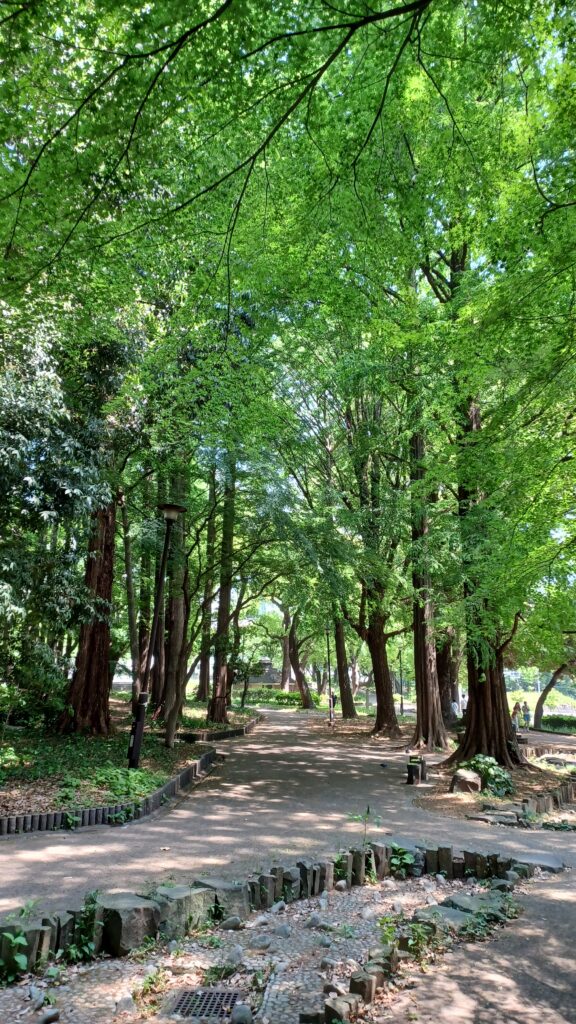

Place No. 23 Park and the Ten Jizo.
Pokémon Centre Tokyo DX
But Tokyo, and Japan in general, is not just famous for its shrines, temples, and architecture, but also its pop culture (in particular anime, manga, and video games).
One example is Pokémon, of course! If you’re into that, buying some cool merch at the Pokémon Centre Tokyo DX (Nihombashi Takashimaya S.C. East Building 5F, 2-11-2 Nihombashi, Chuo-ku, Tokyo, 103-0027, Japan) is a must!
When you first enter the store, Pikachu, Snorlax, and Mew are here to greet you, and the big screen showing new and old Pokémon video games took me right back to my childhood!

Both young and mature (lol) Pokémon fans get their money’s worth here, as there’s a great selection of goodies, from kawaii (cute) plushies, food, cutlery, stickers, stationary items, jewelry, clothing, to so much more!


The Pokémon game screen and cool stuff you can find at the Pokémon Centre Tokyo DX!
The Pokémon Centre DX is one of Tokyo’s six Pokémon Centre branches, and is open daily from 10:30 am to 9 pm. It is only a 5-minute walk from Tokyo Station’s Yaesu North Entrance.
Satisfy Your Inner Otaku (Geek) in Akihabara
To make your day of Japanese pop culture even more special, take the metro to Akihabara (often called Akiba), Tokyo’s neighbourhood of electronics stores and otaku (geek) culture.
It has a few chain electronic stores, like Sofmap, Laox, and Bic Camera, and some offer duty-free shopping to foreign tourists.
Other stores specialize in manga and anime collectibles, (retro) video games and consoles (like Super Potato), figurines, and card games.
Don’t miss Akiba’s Arcade Game Centres, where you can play any games (including claw machines) you like! Many of the machines accept ¥100 coins, and if you run out, just head to one of the coin exchange machines, and you’re good! 😀
My favourites are the UFO catcher machines and music games at TAITO Station (4 Chome 2-2, Sotokanda, Chiyoda City, Tokyo, 101-0021, Japan)! It’s the largest Arcade Game Centre in the world with its five floors.




Moreover, you can visit one of the famous Maid cafés (where waitresses dress up as maids) or a Manga-Plus-Internet café (where basically, you can read manga, surf the internet, but also spend the night for cheap) in Akihabara.
You might see people dressed as cosplayers in this area as well. If you’d like to take a picture, make sure to ask for permission first.
Shibuya Crossing
For the next stop on our list, let’s take the metro to Shibuya Station, which is right across from Tokyo’s iconic Shibuya Crossing (Dogenzaka, Shibuya-ku, Tokyo, 150-0043, Japan).
Shibuya Crossing is the busiest pedestrian intersection in the world, with an average of 3,000 people crossing the street every two minutes! With these huge crowds, it’s natural to expect chaos. But instead, I felt very safe, and everything is done in an orderly and efficient manner.
The best way to experience Shibuya Crossing is to dive into the crowds first, then watch the people from a bird’s eye perspective. The Starbucks across from Shibuya Station and the MAGNET by Shibuya109 rooftop deck on the 7th floor offer the best view.
Here’s a video I took of the crowds at Shibuya Crossing:
Many movies have been filmed at Shibuya Crossing, such as Lost in Translation and The Fast and the Furious: Tokyo Drift. Besides, it’s famous for its Halloween Party and the New Year’s Eve countdown.
Visit the Hachiko Statue
Before heading back to the train station, take a quick stop at the Hachiko Statue (2-1 Dogenzaka, Shibuya-ku, Tokyo, 150-0043, Japan). It honours Hachiko, a loyal Akita dog, who waited for his master, Professor Eizaburo Ueno of Tokyo University, every day at 3 pm in front of Shibuya Station.
Sadly, the professor suddenly died at work in 1925, but Hachiko kept waiting for him daily until his own death until about 10 years later.

Wander Around Ueno Park
Another cool attraction in central Tokyo is Ueno Park (Uenokoen, Taito City, Tokyo, 110-0007, Japan). First opened in 1873, it’s one of the five oldest public parks in Japan.
The park covers 54 hectares (133 acres) and is most famous for museums (e.g. Tokyo National Museum, National Science Museum, and the Tokyo Metropolitan Art Museum) and Ueno Zoo, Japan’s first zoological garden.
There are also more than 1,000 cherry trees, so many people celebrate hanami (cherry blossom season) here from late March to early April every year. Ueno Park is also a great picnic spot, and there are festivals and events on a regular basis.


Ueno Park map and some beautiful plants growing inside the park.
Originally, the park area was a part of Kaneiji Temple, one of the largest and wealthiest temples of the city, that belonged to the ruling Tokugawa clan during the Edo period. Unfortunately, this temple was almost completely destroyed during the Boshin War, which lasted from 1868 to 1869.
On May 15, 1868, the Battle of Ueno broke out in today’s Ueno Park. The Shogi-tai soldiers from the old Tokugawa government fought against the new imperial Meiji government. The Shogi-tai were defeated within only 10 hours. In 1874, the Ueno War Memorial was built to remember the Shogi-tai.
You can also look at the Saigo Takamori statue, who was one of the generals in the Battle of Ueno, and is often called the last true samurai in Japanese history.


The Ueno War Memorial and the Saigo Takamori statue.
Shinobazu Pond & Bentendo Temple Hall
After learning about these tragic past events, it’s a relief to stumble upon the peaceful Shinobazu Pond. It has many lotus flowers, that are in full bloom in July and August, and are a symbol for purity in Buddhism.
It also has a duck pond and a boat pond, and you can rent a paddle boat as well.

Next, take a look at the impressive Bentendo Temple Hall (2-1 Uenokoen, Taito City, Tokyo, 110-0007, Japan), a Buddhist temple standing on an island inside Shinobazu Pond.
It was built in the early 17th century to honour Benten (also called Benzaiten), the goddess of good fortune, wealth, music and knowledge.
The temple hall was destroyed in 1945 due to bombings in World War II, but it was rebuilt in 1958. Fortunately, the sacred Benten statue survived this attack and is now shown in the Main Hall in the inside of the temple hall.

Bentendo Temple Hall is open daily from 7 am to 5 pm and admission is free.
Gojoten Shrine
Then keep on walking until you reach Gojoten Shrine (4-17 Uenokoen, Taito City, Tokyo, 110-0007, Japan). This less crowded but equally beautiful Shinto Shrine has been standing within Ueno Park since 1662.
Gojoten Shrine was built to honour the gods of medicine and healing. So people come here to pray for healing, but also students hoping for good exam results. I especially loved the tunnel of red torii gates and the serene vibe of this place.


Places of prayer inside the Gojoten Shrine complex.
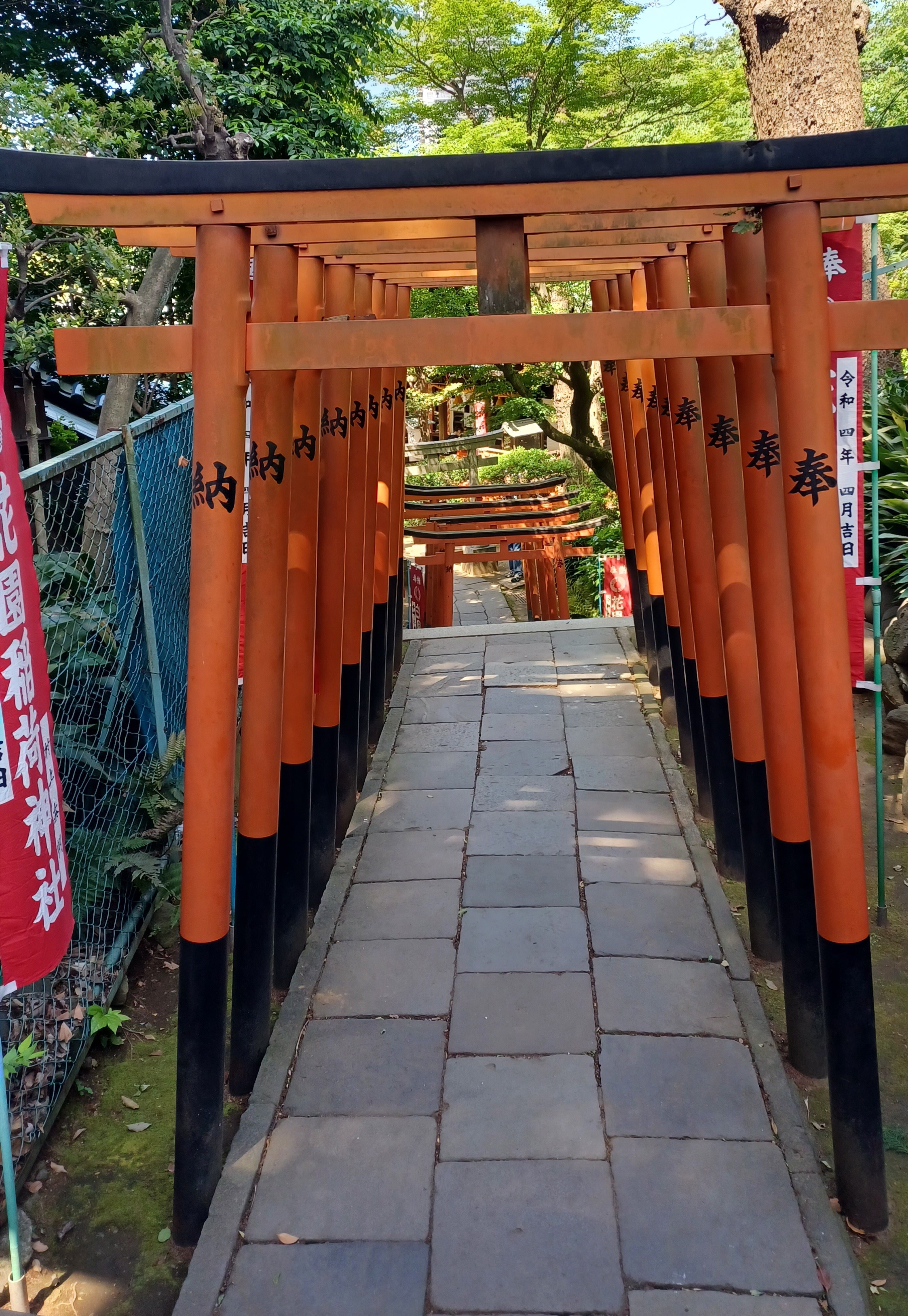
The Sailor Moon Store
Last but not least, if “In the name of the moon, I will punish you!” are your favourite words, you cannot miss the Sailor Moon Store in Harajuku (1-11-6 Jingumae, Shibuya-ku, Tokyo, 150-0001, Japan)!
It was opened in 2017 to celebrate Sailor Moon’s 25th anniversary and has a great selection, e.g. stationary items, posters, magnets, jewelry, key chains, cards, socks, and even a Sailor Moon costume! Some of them are exclusively available at the Sailor Moon Store, nowhere else.


One of the Sailor Moon Store windows and I found a cute greeting card!
The Sailor Moon Store is inside the Laforet department store and is open daily from 11 am to 8 pm.
Since Tokyo is such a huge city, it’s impossible to visit all of its amazing attractions in only four days. So feel free to look at Nomadic Matt’s list of The 30 Best Things To Do in Tokyo for more inspiration!
If you’re also spending time in Shinjuku, Jerardo’s 1-2 Day Shinjuku Itinerary is very helpful!
Where to Stay in Tokyo
Guest House Toco
Address: 2-13-21 Shitaya, Taito City, Tokyo, 110-0004, Japan
For the first three nights, I stayed at Guest House Toco. It is within a quiet residential area in East Tokyo, but only a few minutes away from Iriya Station and many attractions are nearby, like Akihabara and Ueno Park.
This wooden traditional Japanese house was built in 1920 and a place like this is hard to find in Tokyo these days. It also has a peaceful Zen garden with trees, koi fish pond, and stone lanterns.
I stayed in a very spacious 8-bed female dorm and the mattresses were super comfortable! There’s also a small work station with a view of the garden and they have private rooms as well.
Moreover, there’s a cozy bar/lounge area for guests and locals to use (your first drink of the night is free!), kitchen and eating area, and Japanese breakfast each morning (a vegetarian/vegan option is available).


Dorm bedroom (Photo credit: Toco Tokyo Heritage Hostel*) and the kitchen/eating area.
*This photo is not allowed to be used for commercial use.
One of the biggest perks of this hostel is its staff. Everyone is super kind and helpful and makes you feel right at home. For example, when I had to call a pharmacy, the receptionist was happy to translate between the pharmacist and me.
Here’s a video of the awesome vibe at this hostel (video credit: Toco Tokyo Heritage Hostel*):
*This video is not allowed to be used for commercial use.
Nomadic Matt also put the Toco Tokyo Heritage Hostel on his list of the 10 Best Hostels in Tokyo. Since this hostel is very popular, it’s best to book well in advance.
Akihabara Bay Hotel
Are you looking for a different, but just as authentic Japanese lodging experience? Then I highly recommend staying at a Capsule Hotel for a night!
Originally, this accommodation concept was invented for Japanese business men who missed the last train, and needed a comfortable but cheap accommodation for the night. But nowadays, capsule hotels are also available to women and foreign travelers!
I stayed at the Akihabara Bay Hotel (44-4 Kandaneribei-cho, Chiyoda-ku, Tokyo, 101-0022, Japan), which is for women only and is just a few minutes of a walk from Akihabara Station.
Guests stay and sleep in a little capsule (pod), that consists of just a bed and some basic amenities (e.g. lights, Wi-Fi, bedding, plug ins, and alarm clock). Towels, toothbrushes, razors, slippers, and pajamas are provided for the night, too. And if you want privacy, just pull down the capsule door!


My capsule bed and the room I stayed in!
Guests only bring their most important things into their capsule and store their luggage in a separate locker room overnight. At the Akihabara Bay Hotel, there’s also a lounge in the basement, where you can eat meals, make phone calls, etc.
Many capsule hotels are found in larger Japanese cities and inside or near train stations, so they are very convenient! But most people come here to sleep only, so chatting with your roommates is not common.
Where to Eat & Drink in Tokyo
Since Tokyo is such a huge city, there are thousands of restaurants for every taste and budget.
Here are my favourites:
T’s TanTan Ecute (7 Chome 1-1 JR, Ueno, Taito City, Tokyo, 110-0005, Japan). This all vegan restaurant chain has several locations in Tokyo and I went to the one inside JR Ueno Station. While they are famous for their ramen noodles, they also serve soy hamburger meat, lasagna, pizza, and soup.
I ordered their White Sesame TanTan Ramen with rice and soy meat. So good!

Coco Ichibanya Curry House (Kanda Hirakawach 4, Chiyoda-ku, Tokyo, 101-0027, Japan). If you’d like to try Japanese curry, look no further! This chain restaurant is right across from Akihabara JR station, and you can choose between meat, seafood, and vegetarian curry. The prices are very budget-friendly, too.
I had the Vegetarian Curry with rice and soy hamburger meat. So yummy!
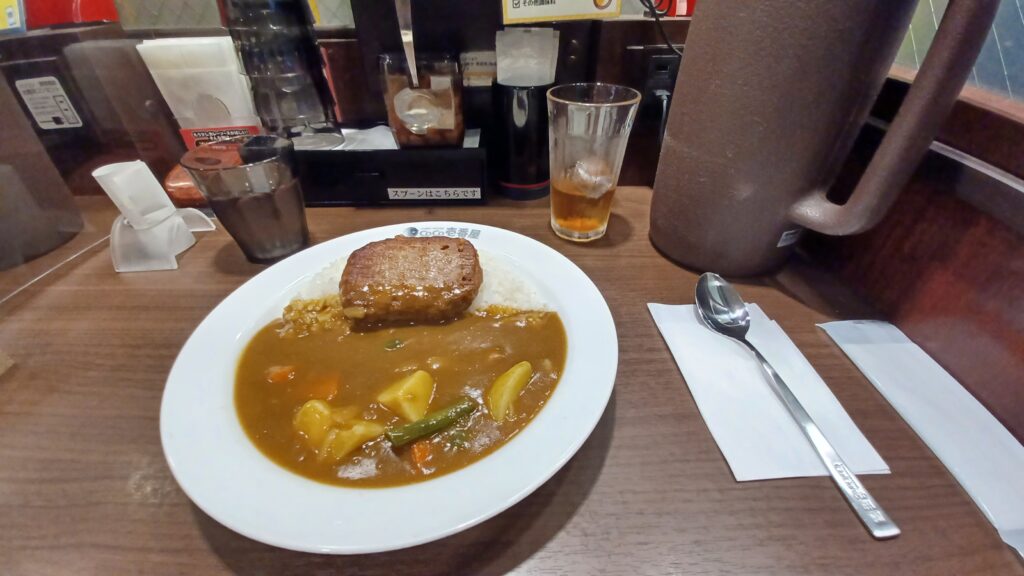
To get the full Pokémon experience in Tokyo, there’s no way to miss the awesome Pokémon Café, which is right next to the Pokémon Centre Tokyo DX!
Here you can enjoy a bunch of Pokémon-themed meals, drinks, and sweets, such as an omelet-shaped Pikachu, Pikachu Pancake, Gengar’s Confuse Ray Smoothie, and the Pokémon Café’s Very Chocolate Parfait (my choice)! Plus, your Pokémon friends are happy to join you 😀


But the best part is when Pikachu appears out of nowhere and starts its iconic singing and dancing! 😀
Moreover, you can buy some unique souvenirs here, like Pokémon-themed plates and soup spoons.
Please note that the Pokémon Café is super popular, so making reservations ahead of time is a must. Reservation days and times open up to 31 days in advance, and are often fully booked within 10-15 minutes! Please find more details on reserving spots here.

Tokyo also has many nice “normal” cafés, so make sure to check these out as well! For example, I ordered a red bean paste bun and Royal Milk Tea for breakfast at the MIYABI Café & Bakery (5 Chome 11-1, Toranomon, Minato City, Tokyo, 105-0001, Japan) on my way to Tokyo Tower.
Another great breakfast option is Vie de France Bakery & Café inside Akihabara Station, where they have Japanese and Western pastries and drinks. I had their Chocolate bread and red bean and sesame donut, and they were to die for!


Left: Red bean paste bun and Royal Milk Tea. Right: Chocolate Bread and red bean and sesame donut.
Many locals in Tokyo buy food and drinks at Convenience Stores (Lawson, Family Mart, and 7-Eleven are the most common) on a regular basis. They are cheap, have a good selection (also for vegans and vegetarians), and you can find them pretty much around every corner!

The same goes for Vending Machines, and many sell soft drinks and alcoholic drinks, but also food, like freshly made pizza and burgers!

In general, I found eating out in Tokyo quite easy despite my limited Japanese language skills. Some customs are similar to North America, such as waiting to be seated and getting a free water with the meal. Besides, many restaurants have an English menu.
But some things are very different, so make sure to familiarize yourself with Japanese eating etiquette here.
It’s also good to know a few basic Japanese words and phrases and you can point at the dish you want to order as well. While many Japanese people don’t speak much English, the staff will always try their very best to help you. Please note that tipping doesn’t exist in Japanese culture.
Another cool thing in Japan is that some restaurants have artificial food displays outside, so you can see what it is! Or if worse comes to worst, Google Translate is a big help to communicate.

How to Get Around Tokyo
Once you get a hang of it, getting around Tokyo via public transportation is pretty easy. The signs inside train stations are in Japanese and English and I found Google Maps quite helpful in most cases.
For taking subways and trains within Tokyo, it’s a good idea to buy an IC card (Suica or Pasmo card) at one of the ticket machines. You can charge it with cash whenever your budget runs out. They can also be used to buy stuff at convenience stores or at vending machines!
Trains in Tokyo and the rest of the Japan are always on time, which is amazing! Besides, they are efficient, clean, and the train staff is always happy to help. In some areas of Tokyo, there are women-only cars during certain times of the day for more safety and security.
If you plan to visit more places in Japan after Tokyo, I recommend buying a Japan Rail Pass. Only foreign tourists are allowed to use it, and it’s valid for unlimited transit on most JR trains all over the country for 7, 14, or 21 days. Regional JR Passes are available for certain areas as well.

Tokyo has a good bus system as well, and buses run from 6 am to 10 pm daily.
Tokyo has two main airports, Tokyo Haneda International Airport and Tokyo Narita International Airport. Public transit is available from/to downtown Tokyo (about 30 mins from Haneda Airport and about an hour from Narita Airport).
Like in other big cities, it’s not recommended to rent a car due to heavy traffic. Moreover, people drive on the left in Japan, so that might be a challenge if you’re not used to it. The same goes for taxis or rideshares, because they can get crazy expensive.
If you’d like to explore Tokyo with a local guide, Get Your Guide and Viator offer lots of walking and cycling tours. Of course, you can also walk around at your own pace or rent a bicycle. Tokyo is a very bike-friendly city, and many locals use this method of transportation as well.
One more thing: While walking around Tokyo, you should expect to get lost sooner or later. So it’s a good idea to plan some extra time if you have an “appointment” (e.g. a train departure time). And sometimes, you may find unique attractions that you otherwise could have missed! 😉

The Best Time to Visit Tokyo
Most tourists go to Tokyo in the spring (late March to early April) for the cherry blossom season or in October/November, when the leaves change their colours. So it gets pretty crowded, and accommodation prices will be higher or fully booked quickly.
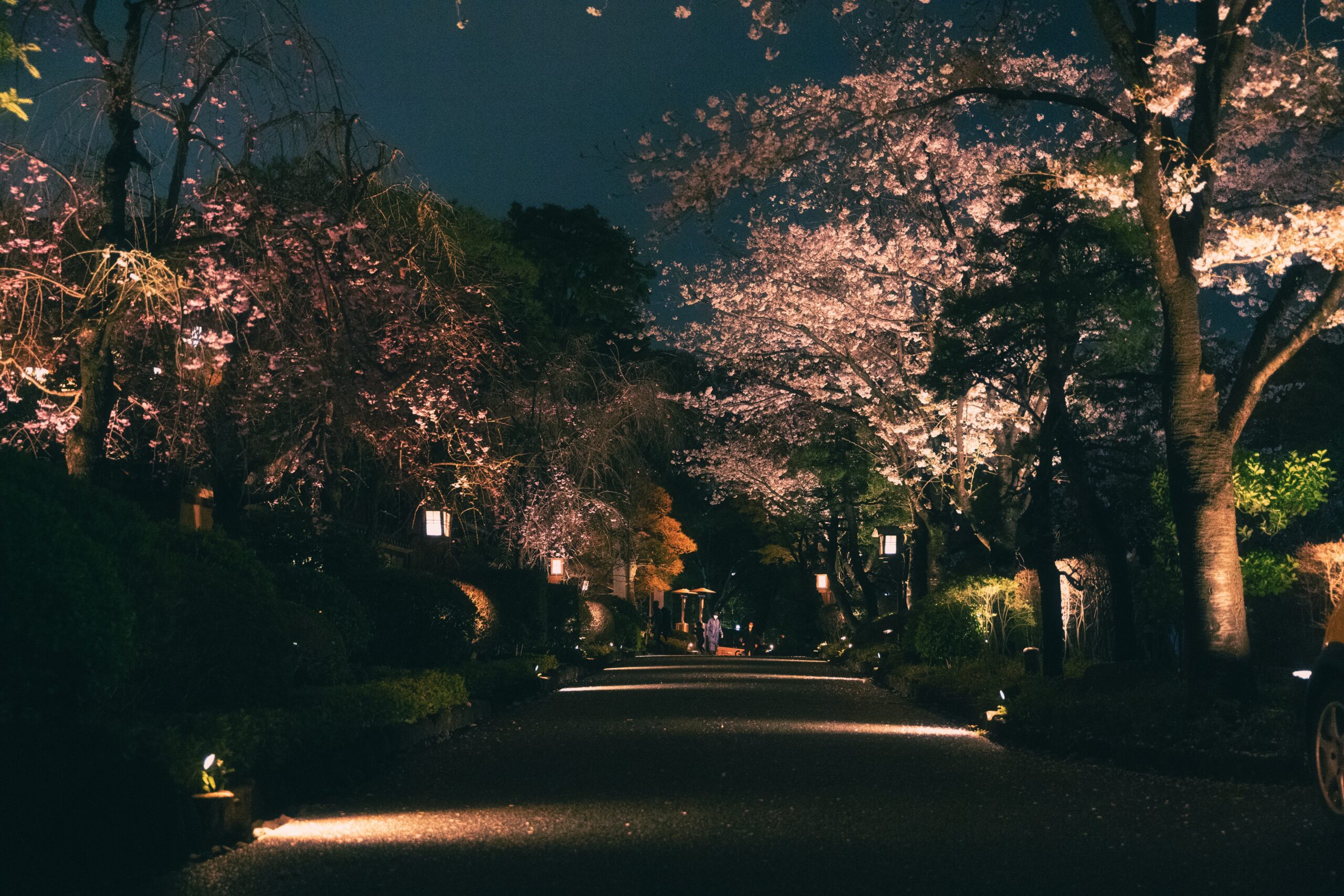
I went to Tokyo in May, which is during the shoulder season, and it was perfect! It was nice and sunny, and the average temperature was 20 C (68 F). The rainy season is in June and it gets very hot and humid in July and August (26 C/78.8 F on average), so it’s not recommended to visit Tokyo then.
Mid to late April and September are supposed to be beautiful and warm months as well. But please note that typhoon season is from May to October and earthquakes occur sometimes, so it’s a highly recommended to purchase travel insurance. I used World Nomads for this trip.
Thankfully, Tokyo doesn’t get too cold in the winter, and there are way less tourists around. The coldest month is January (5 C/41 F on average), and if snow falls, it usually melts within a day or two.
It’s also a good idea to learn about Japanese holidays while planning your trip.
So that’s a wrap on How to Spend Four Fays in Tokyo, and arigato (thank you) for joining me! While it sounds cliché, it’s obvious that Tokyo offers a great mix of both traditional and modern attractions, and is an amazing city to get lost in.
First, I was excited but also a bit scared to visit Tokyo (let’s face it, almost all of Canada’s population lives in the metro Tokyo area)! But I had an awesome time exploring this city and my favourites were the Onoterusaki Shrine, Pokémon Café, and the Gojoten Shrine with its impressive torii gate tunnel!
Tokyo is one of the safest cities in the world. Besides, everyone, from servers to cashiers, hostel receptionists, and random people on the street, was so kind, and made me feel welcome right away.
Here are a few of my other Japan blog posts, if you’re interested:
Fukuchiin Temple Stay in Mount Koya, Japan
Is Nagoya Castle Worth Visiting? (Guest Post for The Directionally Challenged Traveler)
How to Spend 48 Hours in Kyoto, Japan
Is Nikko, Japan Worth Visiting?
- 9 REASONS TO VISIT LEIPZIG, GERMANY FOR A DAY - April 7, 2025
- ONE DAY IN ANCONA, ITALY: THE 6 BEST THINGS TO DO IN 2025 - February 28, 2025
- THE ULTIMATE SOUTH COAST OF ICELANDITINERARY: THE PERFECT DAY TRIP FROM REYKJAVIK - February 1, 2025


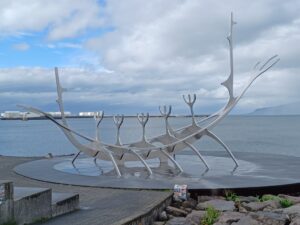

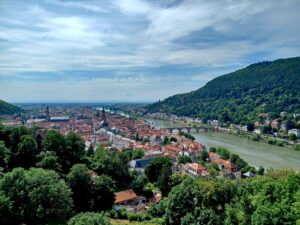

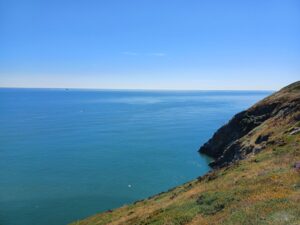
We are currently planning our first trip to Japan for March 2025! Pinning this for later. The Pokemon Cafe looks awesome!
Thank you! Yes, it’s a very special place, highly recommended checking it out ? Enjoy your time in Japan ??
I never knew about the Jizo! I will definitely have to visit them at the start of my journey there in a few years. My kids would go wild for that Pokemon Cafe (and maybe me too, haha).
Yes, same here, I just stumbled upon the Jizo by accident! And the Pokémon Café is so much fun for both kids and adults 🙂 Hope you’ll have an unforgettable time in Japan! I can’t wait to go back someday.